
Time to bring this puppy (of a series of blog posts) home! Duriong the last couple of weeks I spent in London researching, I also managed to tick something which had been on my bucket list since my first UK trip in 2007: the Portsmouth Historic Dockyard. Portsmouth is a little over 2 hours from London by train, which somehow seemed to always mean just a little too much advance planning for me to actually make this happen. Not this time!
The Dockyard is part of an active Royal Navy base, HMNB Portsmouth, which is home port for two-thirds of the British fleet. The first naval dockyard on this site was begun in 1194 – that’s during the reign of Richard Lionheart – so this area has been at the heart of British seapower for a very long time. Of course, all of the built heritage that remains is far more recent than that, 18th-19th century or so, precisely because it was a working dockyard for so long.
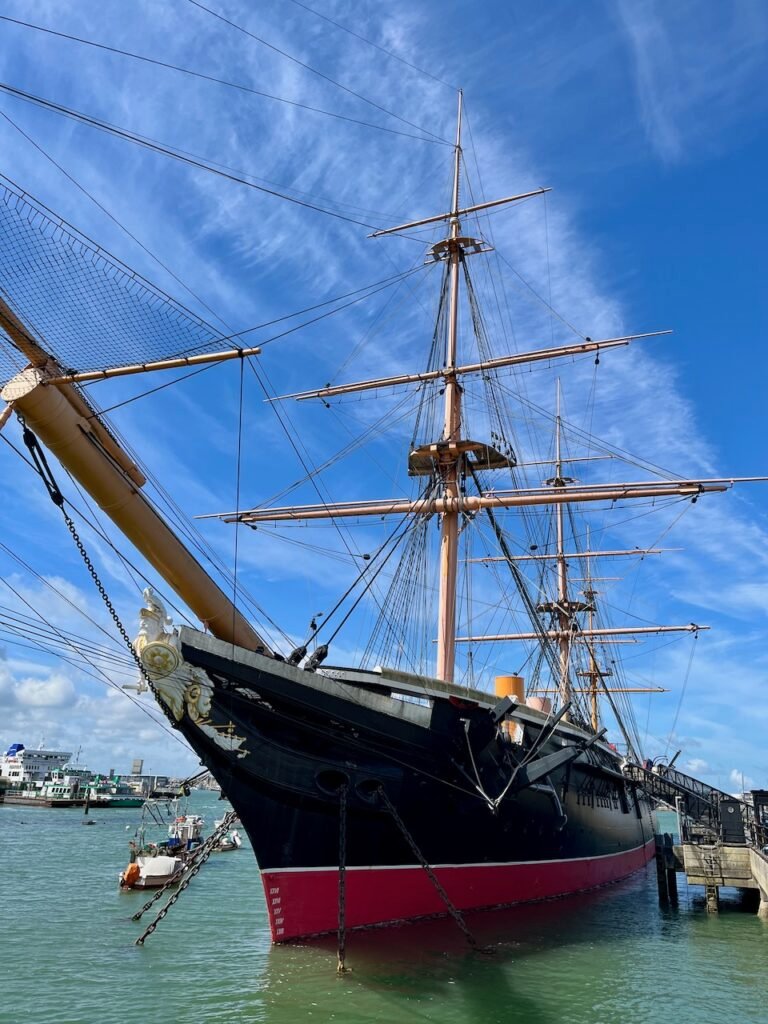
The Dockyard is actually a collection of museums and exhibits, not all of which I got to see. But the stars are of course the ships. This is the first thing you see as you emerge from the station, HMS Warrior. Warrior was the first British ironclad, launched in 1860 in response to the threat posed by the revolutionary French ironclad Gloire commissioned the year before. (The top photo is from Warrior, too, of the less-impressive-but-still-visually-appealing ventilators.)
You can probably just make out the mustard-coloured funnels under the masts; Warrior was a hybrid and could operate under steam as well as sail, as was pretty standard at this time. The really novel thing about Warrior was that it was completely iron-hulled, unlike Gloire which had armour plating over a traditional wooden hull; this was the way of the future. But Warrior and its sister Black Prince were not intended to fight in the line of battle, rather they would use their speed to pursue and engage enemy ships.

Warrior‘s gun deck, with replica 68-pound muzzle-loaders. (Note the replica cutlasses hanging from the ceiling, ready to repel replica boarders.)
Like many warships which survive long enough to become museum ships, Warrior had a varied career. It was on the effective list until 1900, then was a storage hulk for a couple of years, then a depot ship for a couple more, then a floating classroom for a torpedo training school until 1923. Disposed of by the Navy, from 1927 to 1979 it floated off Pembroke, mostly as a fuelling pier. After restoration, Warrior came back to Portsmouth in 1987, well over a century after it was commissioned.
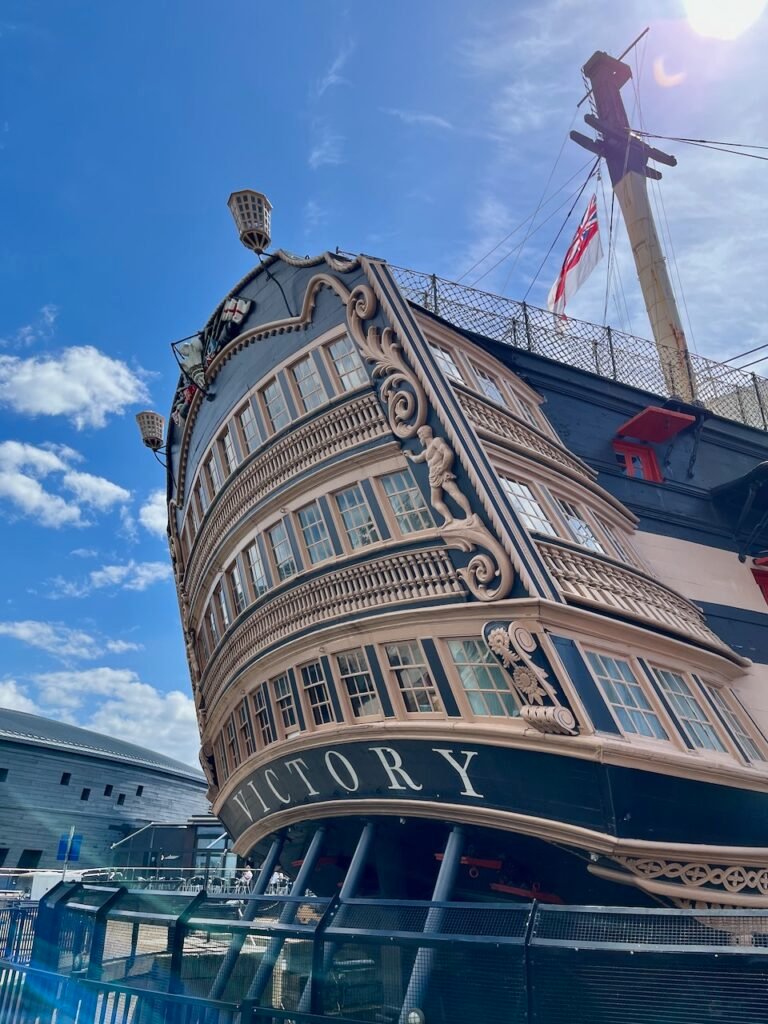
This is HMS Victory, Nelson’s flagship at Trafalgar (and: Keppel’s at Ushant, Howe’s at Cape Spartel and Jervis’s at Cape St Vincent); launched in 1765, a museum ship since 1922, and the oldest ship still in commission anywhere in the old; and, unfortunately, undergoing major conservation works since 2021. I mean, it’s fortunate for Victory; it’s myself I feel sorry for, as most of the ship isn’t accessible to tourists.

But not all! Here’s Victory‘s Great Cabin, as seen in Ridley Scott’s Napoleon, apparently.

HMS Prince of Wales, I believe; almost as covered up as old Victory.
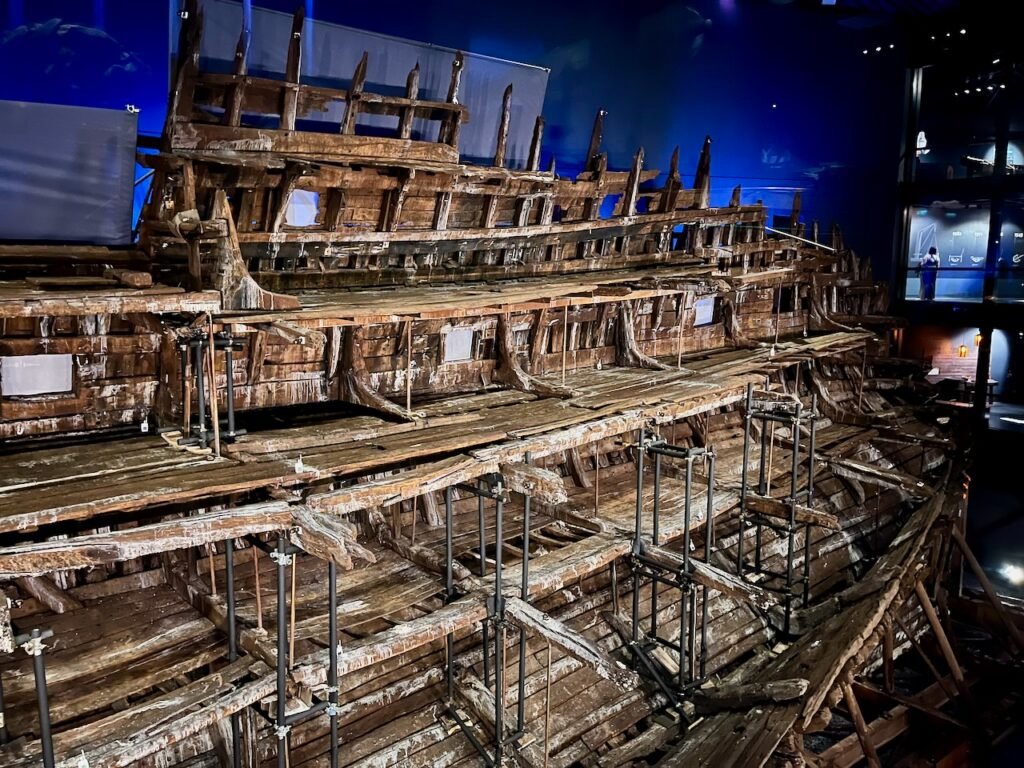
On to the next treasure! This is Mary Rose, which, like many other people my age, I dimly recall watching television footage of its wreck being hauled up from the sea floor in 1982, after having sunk as it sailed to fight off a French fleet in 1545 (that part I don’t remember!) It’s been undergoing conservation for decades; it was only in 2016 that it became possible to see the hull dry and unencumbered, in its fancy new museum.

These are no replicas! They’re the actual cannon, with actual carriages, actual loaders, and actual shot, which were just about to engage the French fleet when Mary Rose went down. This was the first generation of broadside-firing warships, when the technology and tactics were still being worked out, so these objects are hugely important for understanding the origins of the next three or so centuries of naval warfare.
So, having already seen Batavia, only Vasa remains on my ‘recovered shipwrecks from the great age of sail’ bucket list.
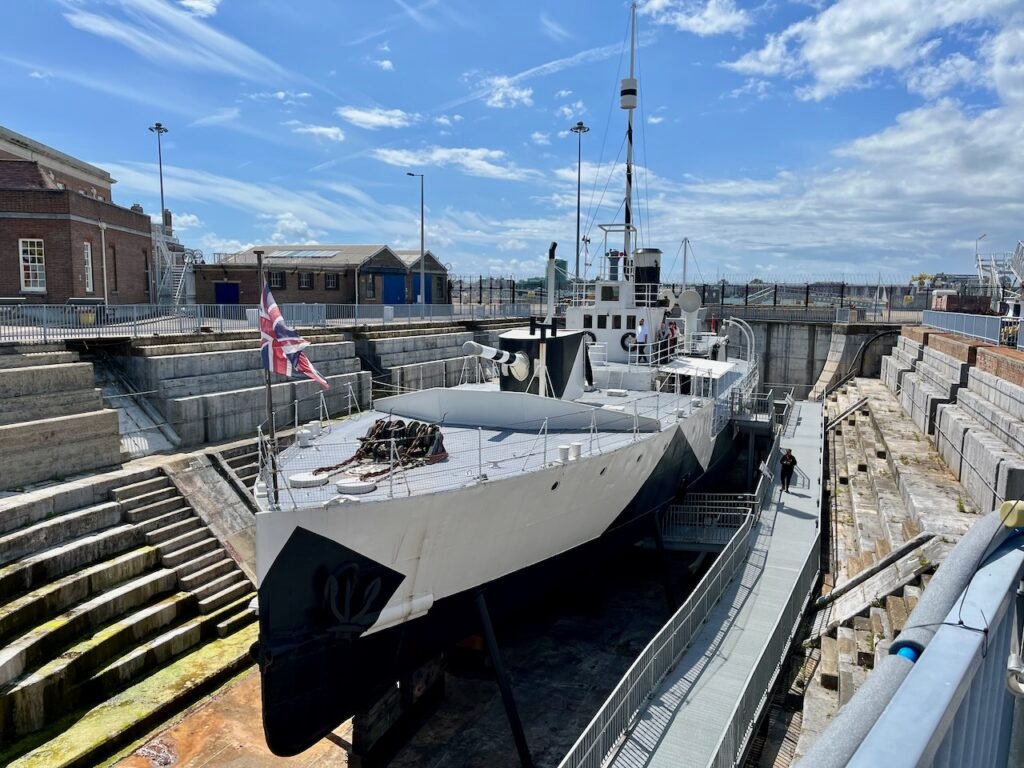
This is M33, a relatively humble ship (no martial or royal names here), yet a historically important one. It’s a monitor, meaning its main and almost sole purpose, with its 6-inch guns fore and aft, was to be a floating gun platform for shore bombardment, which is what it did at the Dardanelles in 1915, North Russia in 1919, and at Salonika and the Aegean in between. I think it’s one of only three surviving Royal Navy ships from the First World War, the others being HMS Caroline and President – and President is apparently soon to be scrapped.
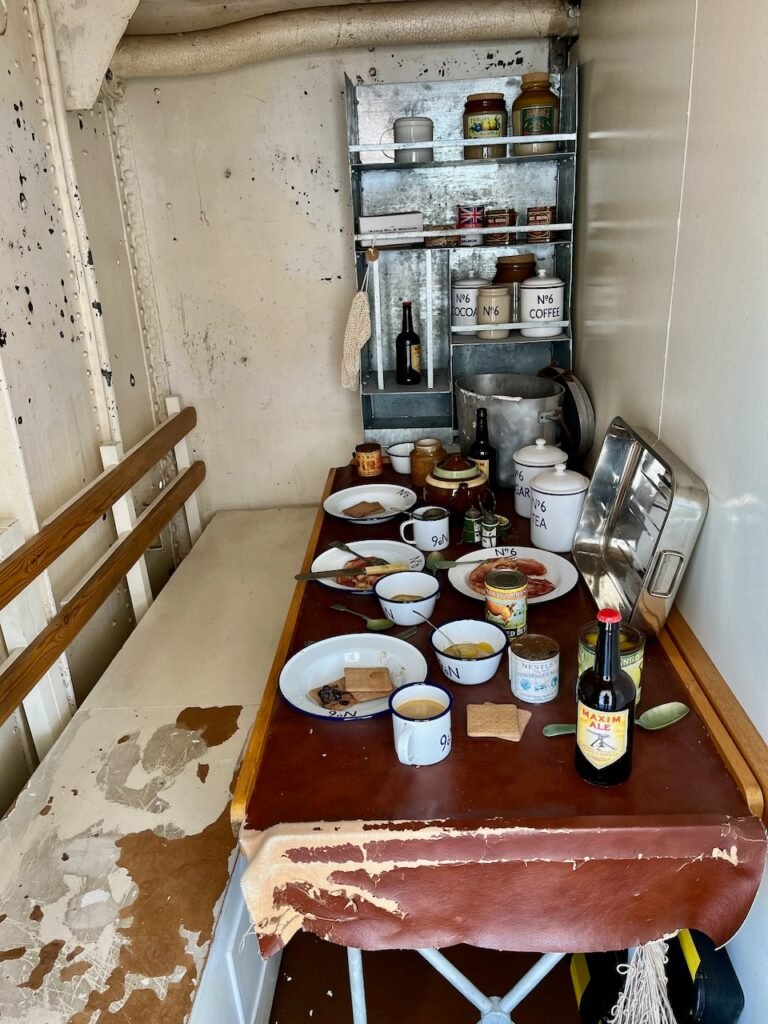
The mess, or just a mess – though M.33 is not a big ship, it still had a crew of 72, and the fact that even though the cups and dishes are clearly replicas, that everything is labelled ‘No. 6’ suggests it’s one mess of several. The documentation was a little on the minimalist side!
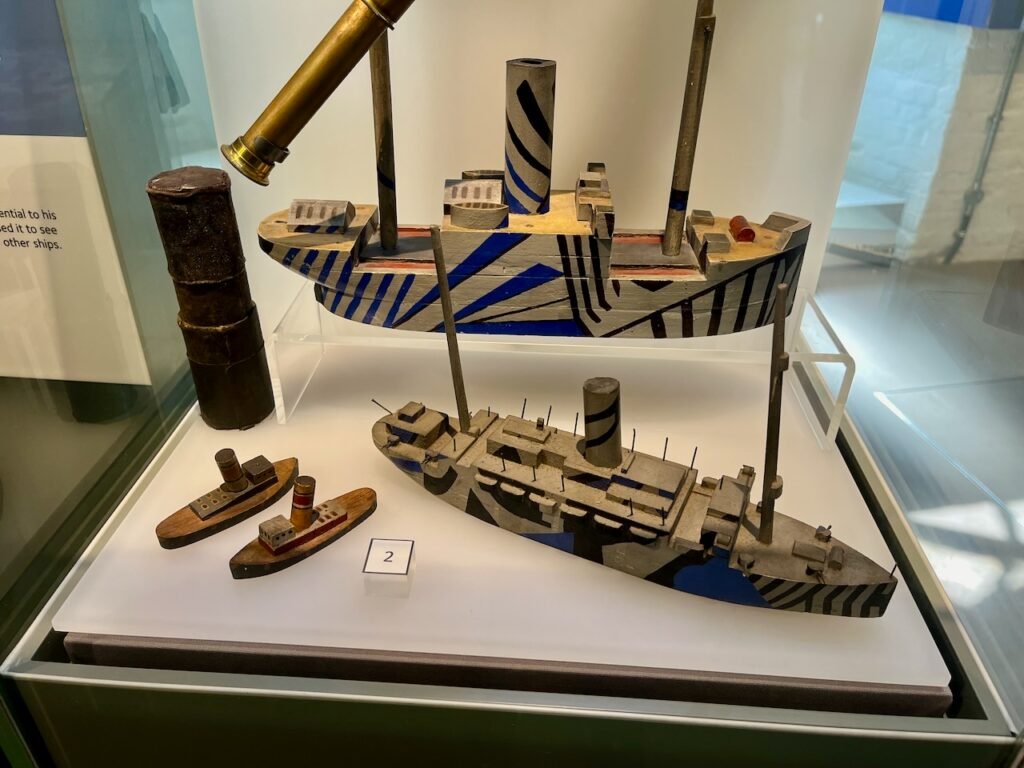
Enough of the big ships, it’s time for models! These were all made by a naval reservist, Phillip Needell, who served in the First World War as a signaller aboard HMS Alamanzora, which was built as an ocean liner but commissioned in 1915 as an armed merchant cruiser. The biggest model is supposed to be Alamanzora but, looking at other models, I reckon it could just as easily be the other dazzle ship.
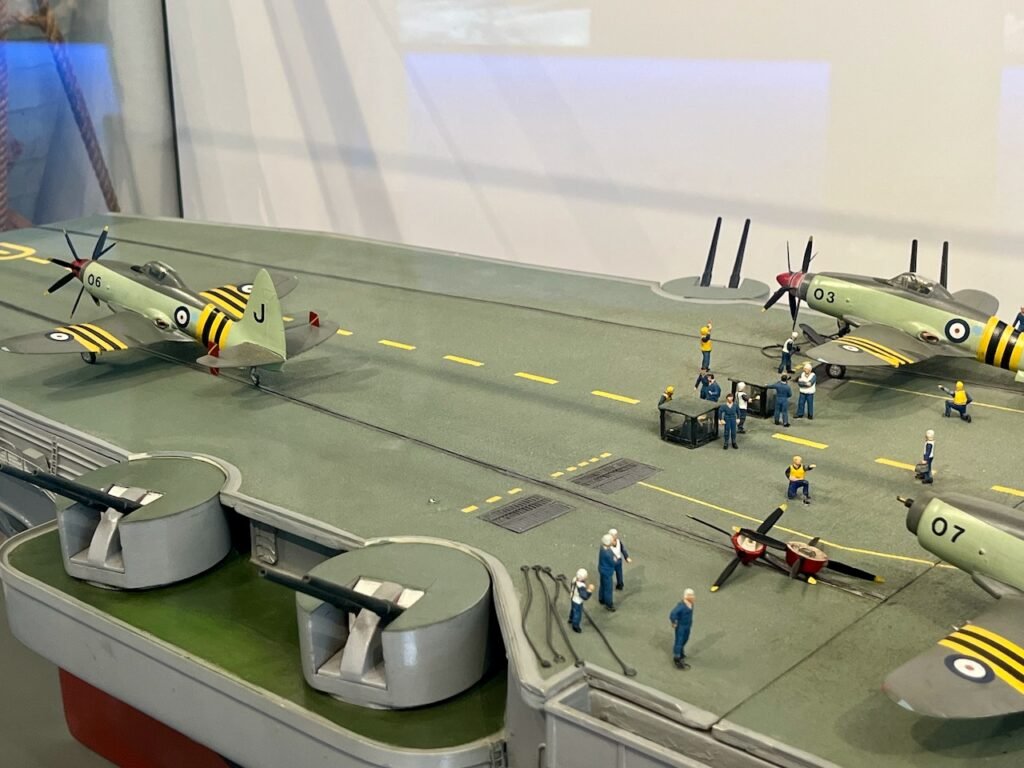
Detail of a big model of HMS Eagle, a postwar carrier, with its Wyverns ready to launch (apart from the one having its propellers replaced), perhaps during the Suez crisis.
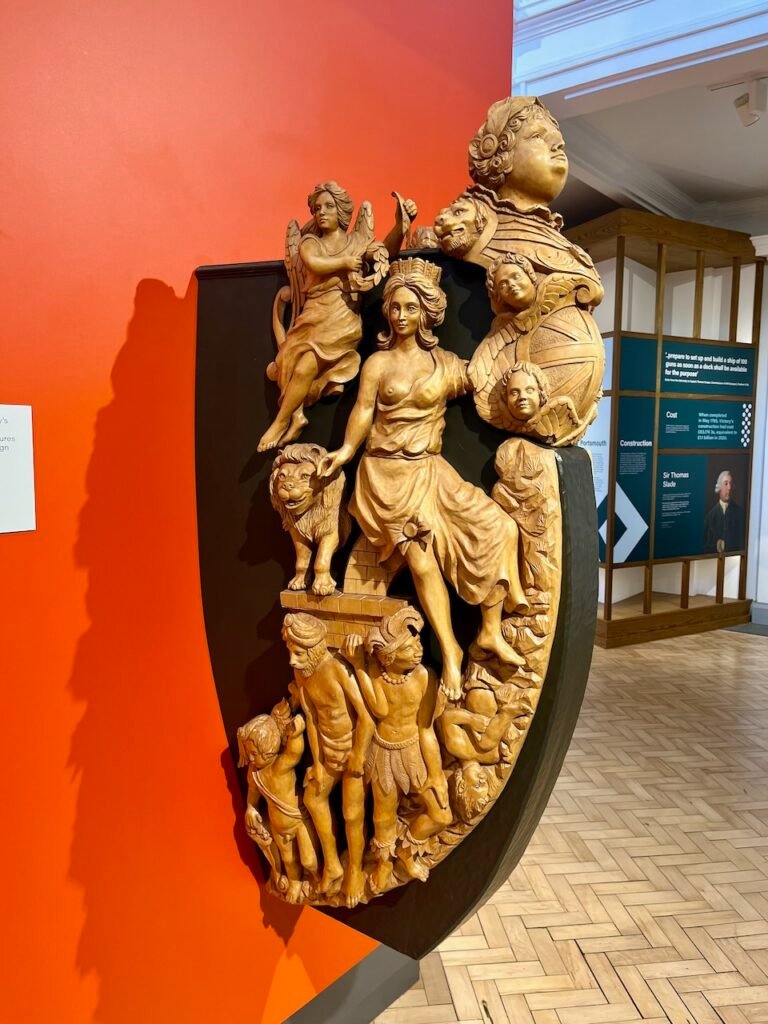
The caption for this describes it as ‘A reduced scale replica of HMS Victory’s first figurehead showing a bust of King George Ill supported by the winged figures of Victory and Peace’. But there’s clearly more going on that just that, because (along with the odd lion and putti heads), Victory and Peace appear themselves to be supported by (or crushing beneath their feet) stereotyped South Asian and American Indigenous people. In fact, one figure is upside down, and so presumably dead. It’s more disturbing the longer I look at it.
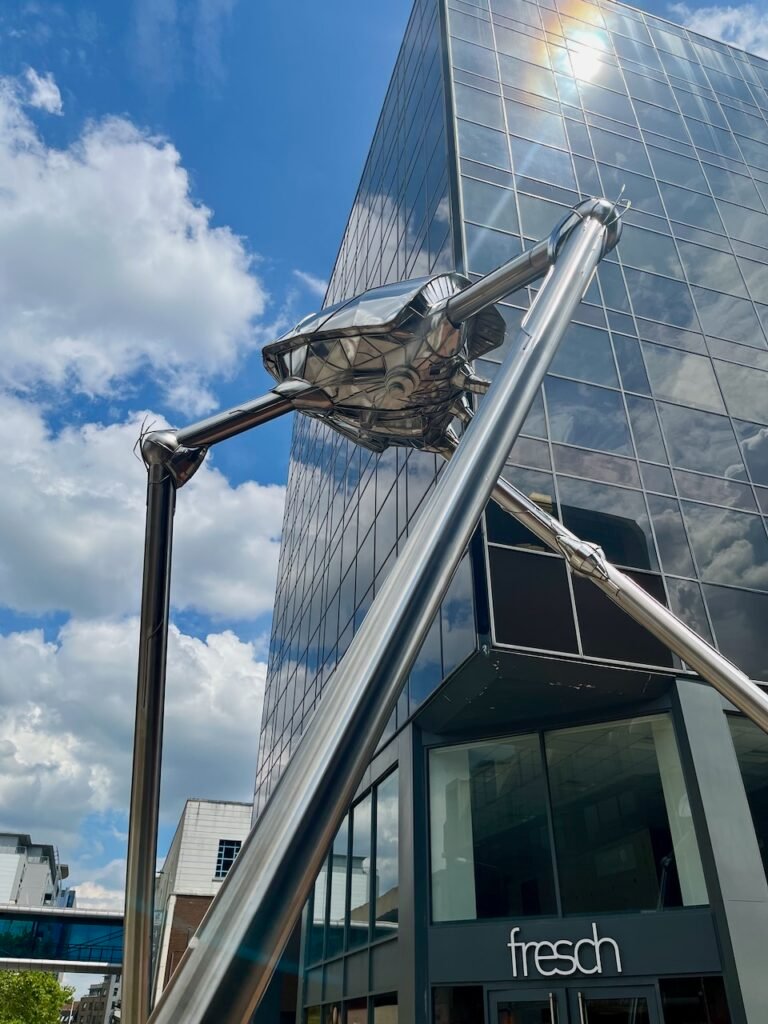
Another model, this time not nautical and not at Portsmouth. It’s a Martian tripod at Woking, which is where I went to do research at the Surrey History Centre, where H. G. Wells was living when he wrote The War of the Worlds, and also where he set much of the novel. He must have had great fun smashing up his town!

The Royal Pavilion at Brighton (where I visited the East Sussex and Brighton and Hove Record Office). A fittingly fantastical end to a fantastic trip which now seems to be receding into fantasy…
![]() This work is licensed under a Creative Commons Attribution-NonCommercial-NoDerivatives 4.0 International License.
Permissions beyond the scope of this license may be available at http://airminded.org/copyright/.
This work is licensed under a Creative Commons Attribution-NonCommercial-NoDerivatives 4.0 International License.
Permissions beyond the scope of this license may be available at http://airminded.org/copyright/.






This is a fascinating read! I especially enjoyed the historical details and the images.